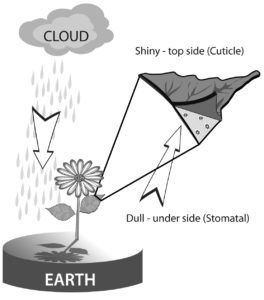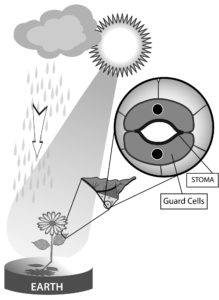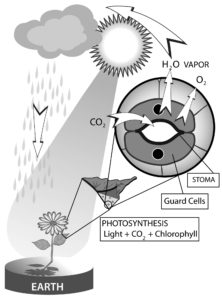Author’s clarification: Initially I started this online project with the thought that I would contribute smaller bites from my book So Shall My Word Be. I then changed my mind and decided that it would be best to include as posts an entire chapter and that this would make more sense to my reader. For your information: blogs #18, #19, and #20 constitute the entire first chapter and this post is obviously chapter two. Initially, I created audio for chapter one and this audio, of course, is my audio attempt at chapter two. And. if I have time I may do that with the rest of the book.
Let’s take a look at Isaiah 55:10-11.
10“For as the rain comes down, and the snow from heaven,
And do not return there,
But water the earth,
And make it bring forth and bud,
That it may give seed to the sower
And bread to the eater,
11So shall My Word be that goes forth from My mouth;
It shall not return to Me void,
But it shall accomplish what I please,
And it shall prosper in the thing for which I sent it.”
Since verse 11 starts with “So shall My Word be…,” the obvious question is, “So shall My Word be like what?” An analogy is obviously being introduced; therefore, it is reasonable to conclude that if we can understand verse ten then we will already be miles down the road in understanding verse eleven.
When I first began to analyze verse 10, I concluded it was talking about evaporation. It seemed to be a picture of water coming down to earth as rain or snow and returning to the sky through the process of evaporation, where the liquid water vaporizes over time and rises back into the air.
But evaporation did not seem to be a complete solution to the ideas presented. Because I did not want to be driving a nail without a hammer and with encyclopedia in hand (this was pre-Internet days), my study took me to an index which said: “see transpiration.” This word was not unfamiliar to me as I recognized it as a term used in my college Botany class just a couple of years previously. Botany is a study of the plant world so I took the “T” volume and revisited this process called transpiration.[1]
As I began to rediscover the attributes of transpiration, I realized verse 10 described exactly that. The prophet Isaiah was referring to something microscopic that was not discovered scientifically until many hundreds of years later. However, it is now common knowledge to most who have completed science classes in school.
Admittedly, I didn’t do well in science class. I know many others like me who simply struggled with the science classes in both high school and college. Unlike some of my friends who seemed to have had a natural propensity for the natural sciences, if I were to earn a half-decent grade, I would have had to make a great effort—one which I was not too willing to make, at least not during that season of my life.
Since that time, however, as I began to respect the responsibilities that accompanied my developing adulthood, I also began to realize the values of diligent study. When in my forties, I took a full academic load at a nearby university in Dallas, Texas, I realized just how much I had not paid attention in those early days of college.
Therefore, as we dive into this study together, my objective is to do everything I can to focus you on what, I believe, can be a life-changing concept. This will not be hard, but please pay close attention. Graphics are included to help you assimilate the information.
If I were to describe to you verse 10 using simple botanical terminology, it would go like this:
For as the rain comes down, and the snow from heaven…(and) water the earth
Water originates in the clouds as vapor, but when it condenses, it turns into rain, snow or hail and falls to the earth. This is called precipitation.
And make it bring forth and bud, that it may give seed to the sower and bread to the eater
Generally, the water comes to earth where it is absorbed by the roots and root hairs of plants.
The plants take the water in and, during the process of using the water to its benefit, the liquid water turns back into a vapor. Much of it is stored in, or flows through, the leaves of that plant.
There are two sides to every leaf. The top side is called the cuticle. This is known as the shiny or waxy side and acts to provide a certain amount of protection for the leaves.
The underneath side is dull green in color and is called the stomata[3] because it has thousands of little openings called stomata. If we are referring to only one of those openings, we call it a stoma. Around each stoma are guard cells. Stomata and guard cells can only be observed under a microscope. Though I paid little attention to this particular issue in Botany class, I do remember specifically looking at these very things through a microscope.
When the sun shines on the leaves, the guard cells will change in size, creating an effect that causes the stoma to open. When it opens it releases the invisible water vapor which exits the plant and floats back into the atmosphere (see illustration).
But, what happens simultaneously is very significant.
At the same time that the water vapor is released, carbon dioxide (CO2) from the immediate atmosphere comes into the plant via the stomata.
The CO2 mixes with the green substance in the plant, which is called chlorophyll, and the light from the sun is utilized to produce the glucose, or the food, that the plant needs to survive and grow. This process is called photosynthesis.
All of this is common knowledge.
The water not only helps the plant, first in seed form to germinate and bud but to also grow through the processes of transpiration and photosynthesis. The result is, as Isaiah 55:10 puts it, “seed for the sower and bread for the eater.”
And do not return there but (first) water the earth
To repeat, the water vapor releases from stomata and returns to the atmosphere and eventually back to the clouds where the water originated. In the returning of the water—the completion of the cycle—we see the results in the plant kingdom, “seed for the sower and bread for the eater.”
It is also common botanical knowledge that when stomata open they also release oxygen (O2). This is an important fact because oxygen is what we humans need for survival. But conversely, we exhale carbon dioxide. So what we see here is the plant kingdom providing the earth with a great deal of oxygen, which is obviously critical to humans. Humans, and other forms of animal life, on the other hand, breathe out additional carbon dioxide, which is critical to plants.[4]
[1] All the processes mentioned in this chapter represent just part of the many complex dynamics that go on in plants. Many issues exist like temperature, humidity, wind, and soil water. For the sake of this book’s objectives, I have kept descriptions both brief and as simple as possible.
[3] Also called stomates.
[4] It is over-simplistic to say that humans breathe in oxygen and breathe out carbon dioxide. It is true that humans need oxygen, but less than one-fourth of what we inhale is oxygen. Part of the oxygen, about 5% of all we inhale, is captured by our lungs, and any remaining oxygen is exhaled. It is true that we exhale carbon dioxide but only about 4%. We also exhale water vapor and miscellaneous gases. Both carbon dioxide and water vapor are products of combustion reactions taking place in our bodies. The vast majority of the air we inhale and exhale is nitrogen. From Exploring Creation with Physical Science, Second Edition by Dr. Jay L. Wile. Copyright 2007 Apologia Educational Ministries, Inc., Anderson, Indiana. http://www.apologia.com.




0 Comments